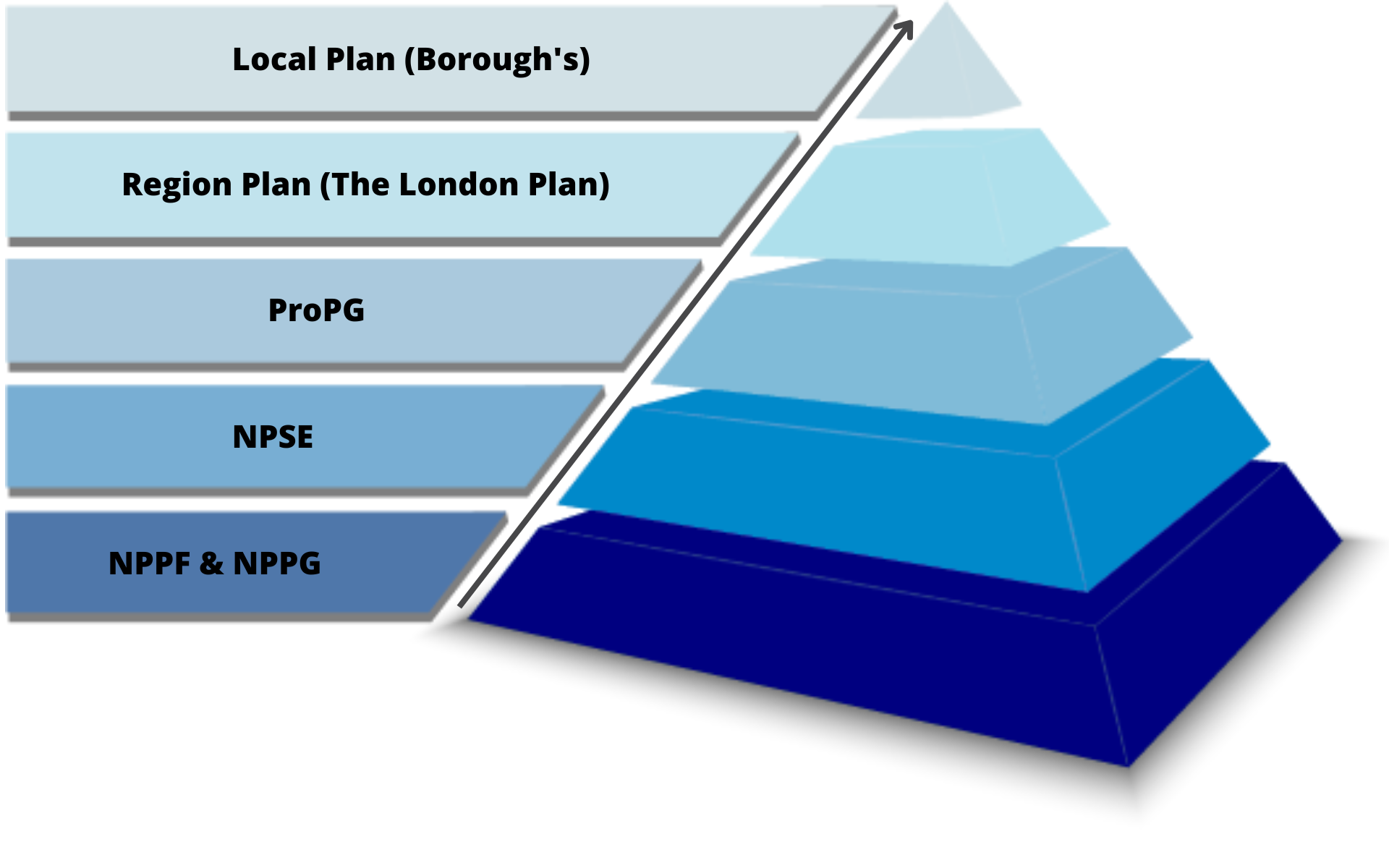UK Noise Planning Hierarchy
By Sean Graham, WKC Group
For new housing developments, noise should be considered in order to minimise any impact it might have on future residents. Below is the hierarchy list setting out national frameworks and policies, along with regional and local plans that should be followed to achieve planning permission with respect to noise.
National Planning Policy Framework (NPPF)
The National Planning Policy Framework (NPPF) published 27th March 2012 and revised 19th February 2019 sets out planning requirements and how these are expected to be applied. The NPPF supersedes previous planning guidance documents such as PPG24 and provides a framework for the development of housing and other occupied facilities.
Paragraph 180 of the NPPF advises planning policies to:
- “Mitigate and reduce to a minimum potential adverse impacts resulting from noise from new development – and avoid noise giving rise to significant adverse impacts on health and the quality of life;
- Identify and protect tranquil areas which have remained relatively undisturbed by noise and are prized for their recreational and amenity values for this reason.”
National Planning Practice Guidance (NPPG)
The National Planning Practice Guidance (NPPG) published 6th March 2014 and revised 22nd July 2019 provides advice on how potential noise impacts in new developments can be managed by planning. The NPPG adds context to the NPPF and should be read together.
Noise Policy Statement for England (NPSE)
The Noise Policy Statement for England (NPSE) published 15th March 2010 sets out the long-term vision of government noise policy with respect to:
- “Environmental noise, which includes noise from transportation sources;
- neighbour noise, which includes noise from inside and outside people’s homes; and
- neighbourhood noise, which includes noise arising from within the community such as industrial and entertainment premises, trade and business premises, construction sites and noise in the street.”
Using concepts from toxicology from the World Health Organisation, the NPSE uses these concepts and applies them to noise impacts. Which are:
- “NOEL – No Observed Effect Level – This is the level below which no effect can be detected. In simple terms, below this level, there is no detectable effect on health and quality of life due to noise;
- LOAEL – Lowest Observed Adverse Effect Level – This is the level above which adverse effects on health and quality of life can be detected;
- SOAEL – Significant Observed Adverse Effect Level – This is the level above which significant adverse effects on health and quality of life occur.”
There is no single objective measure that defines a SOAEL and is likely to be different depending on the type of noise sources, type of receptors and the time at which noise occurs.
The NPSE goes on to describe it’s three aims:
- “Avoid significant adverse impacts on health and quality of life from environment, neighbour and neighbourhood noise within the context of Government policy on sustainable development;
- Mitigate and minimise adverse impacts on health and quality of life from environmental, neighbour and neighbourhood noise within the context of Government policy on sustainable development;
- Where possible, contribute to the improvement of health and quality of life through the effective management and control of environmental, neighbour and neighbourhood noise within the context of Government policy on sustainable development.”
Professional Practice Guidance on Planning and Noise (ProPG)
The Professional Practice Guidance on Planning and Noise (ProPG) published May 2017 provides guidance on the management of noise within England’s planning system. ProPG only considers new residential developments that are impacted upon by transport noise.
A 2-stage approach is used to encourage early consideration of noise related issues which fast tracks sites with low risk to noise impact and supports sites with high risk to noise impact achieve a higher chance of a successful planning application.
The two stages outlined are:
- “Stage 1 – an initial noise risk assessment of the proposed development site; and
- Stage 2 – a systematic consideration of four key elements.”
The guidance then goes on to describe four key elements to be undertaken during stage 2:
- “Element 1 – demonstrating a “Good Acoustic Design Process”;
- Element 2 – observing internal “Noise Level Guidelines”;
- Element 3 – undertaking an “External Amenity area Noise Assessment”; and
- Element 4 – consideration of “Other Relevant Issues”.”
Regional Plan – The London Plan
The London Plan published March 2016 is an overall strategic plan which sets out development plans for planning decisions in London.
With reference to noise, Policy 7.15 in the London Plan states:
“The transport, spatial and design policies of this plan will be implemented in order to reduce and manage noise to improve health and quality of life and support the objectives of the Mayor’s Ambient Noise Strategy.”
It goes on to list how development proposals should manage noise by:
- “avoiding significant adverse noise impacts on health and quality of life as a result of new development;
- mitigating and minimising the existing and potential adverse impacts of noise on, from, within, as a result of, or in the vicinity of new development without placing unreasonable restrictions on development or adding unduly to the costs and administrative burdens on existing businesses;
- improving and enhancing the acoustic environment and promoting appropriate soundscapes (including Quiet Areas and spaces of relative tranquillity);
- separating new noise sensitive development from major noise sources (such as road, rail, air transport and some types of industrial development) through the use of distance, screening or internal layout – in preference to sole reliance on sound insulation;
- where it is not possible to achieve separation of noise sensitive development and noise sources, without undue impact on other sustainable development objectives, then any potential adverse effects should be controlled and mitigated through the application of good acoustic design principles;
- having particular regard to the impact of aviation noise on noise sensitive development;
- promoting new technologies and improved practices to reduce noise at source, and on the transmission path from source to receiver.”
It then states that Boroughs with relevant responsibilities should have policies to:
- “manage the impact of noise through the spatial distribution of noise making and noise sensitive users;
- Identify and nominate new Quiet Areas and protect existing Quiet Areas in line with the procedure in Defra’s Noise Action Plan for Agglomerations”



